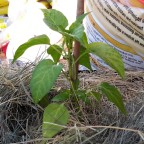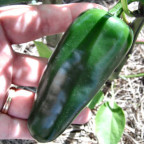Planning the Garden, New Location
Planning a garden is both stressful and a whole lot of fun! Why both? If you’re like me, you don’t have a ton of room, but there is so much you want to plant. 😀
Moving the Garden
My garden planning is way different this year from any year in the past. Why? Because I moved from South Florida to Tennessee — a really big difference as far as climate goes, not to mention things like sunlight, soil, etc.
For instance — I was trying to plant some daffodil bulbs (always wanted to grow them) several weeks ago. I discovered that the soil here is very different from S Florida. Down there, it was mostly sand — up here, it’s mostly red clay and rocks. I did get some daffodil bulbs planted, but it was a losing battle.
I had a nice spot all picked out for the garden, about 12 feet by 7 feet, perfect sunny spot until afternoon after which I get dappled shade. I even got a compost tumbler and had it set up nearby. When the reality of the soil sunk in (so to speak), my plan to rototill and amend with compost, etc. got thrown out the window. *sigh*
Grow Bags to the Rescue
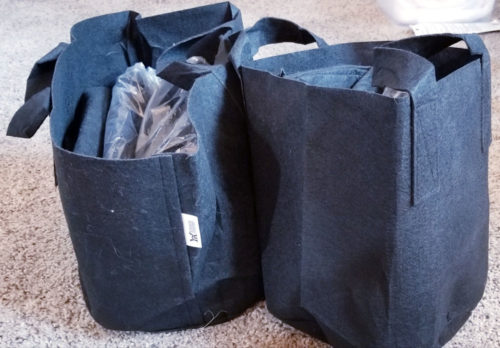 Fortunately, I’ve had some really good experiences with grow bags, so when the planting in the ground plan went out the door, the grow bags stepped in. I’ll have to get a lot of them, because now it opens up a few other planting spot options. For example, I’ll have a great place away from the main growing area for some ornamental peppers.
Fortunately, I’ve had some really good experiences with grow bags, so when the planting in the ground plan went out the door, the grow bags stepped in. I’ll have to get a lot of them, because now it opens up a few other planting spot options. For example, I’ll have a great place away from the main growing area for some ornamental peppers.
How many grow bags you ask? Probably at least 30. No, not all will be peppers — gotta have some tomatoes, some cukes, lettuce and some for those daffodils! Hmmm, might end up being more than 30. I’ll have some 3 gallon, some 5-gallon and a few 7-gallon grow bags. Thought about some 10-gallon, and I haven’t decided.
I actually already bought a few 3-gallon grow bags and 5-gallon grow bags, because I wanted to re-acquaint myself with the sizes before getting a lot more. The 3-gallon will be be great for the ornamentals and some of the smaller-growing peppers. The larger-growing will need the 5-gallon.
(Note: If the above links are somehow not working, try these for the 3-gallon, the 5-gallon and the 7-gallon grow bags. Oh, and the compost tumbler as well.)
Climate Differences
This will be really interesting. For where I lived in S Florida, we had two short growing seasons — from about mid-February to late April, then from late August to November. From May to late August the plants just keel over — if not from the heat and humidity, then from diseases attributable to the heat and humidity.
(But due to the number of hurricanes we’ve had come near to where I lived, I had to quit growing in the August -> November season.)Â November to February was too iffy — sometimes we had cool winters, sometimes we had freezes and I lost most of my plants.
Now that I am in USDA zone 7a, my last average frost date is around the middle of April, and I can expect the first frost somewhere in October. Instead of two shorter seasons, I have one longer one.
OK, enough about the move! The next post will be about the peppers I am planning to grow this year.
Pruning Pepper Plants
To prune or not to prune your pepper plants – decisions, decisions! I did some pruning experiments over the past month, and I do believe that it can definitely help out a lanky plant.
How about some before and after photos, so you can see what I mean?
Before – Introducing Havsau (a.k.a. Mr. Wimpy)
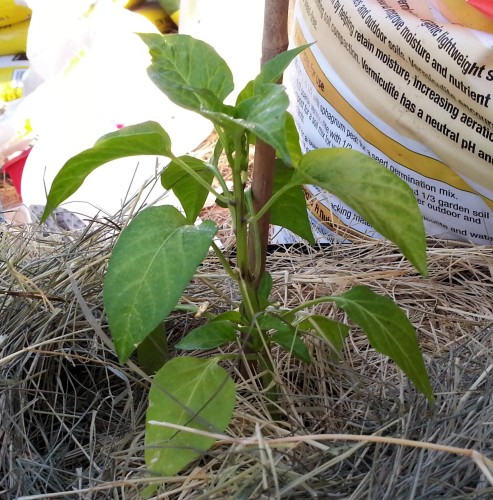
Havsau Before First Pruning 03/07/2016
I bought my Havsau pepper plant at Home Depot or Lowes — I forget which. It looked reasonable, or so I thought. But after being in the ground for a few weeks and doing nothing, I figured I’d try a pruning to see if I could jump-start things.
To the right is a photo of the plant on March 3. It doesn’t look so wimpy in the photo, but if you had seen it in person, you would have agreed that the name fit!
The leaves were light green — not the deeper green that I would like. The stem was also pretty weak. Many of my other plants were flowering and even setting fruit — but not Havsau.
I am growing it in a 5-gallon container, like many of my other pepper plants, and it has a nice rich and loose soil – plenty of compost, too. It just didn’t seem to really catch on like my other peppers.
Time for a Haircut!
The decision I had to make was – how much to cut off? Should it be just a little, or should I go radical?
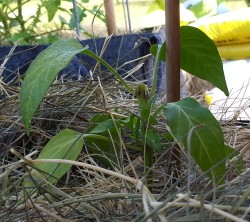
Havsau After First Pruning, 03/07/2016
You might be able to tell from the photo to the left — I decided to go somewhat on the radical side. There were four big leaves left, along with a small leaf or two.
Yes, it did look sad — even sadder than before. I started second-guessing myself, if I had perhaps gone too far?
I decided to keep it so that it only got about 5 hours of sun a day for the first few days, instead of its usual 8 hours. I didn’t want it to get too terribly shocked at first.
Now the theory is that by cutting back the growing tip (the main stem), it forces the plant to bush out and develop multiple stems.
The multiple stems would allow the plant to bush out and be stockier. It would also provide for additional points to develop fruits. I haven’t grown this pepper before — I don’t know if I will like the resulting peppers or not — but if not, I have plenty of neighbors who wouldn’t mind some.
Plus…I just think a stocky plant is a prettier plant.
Three Weeks Later – No More Mr. Wimpy!
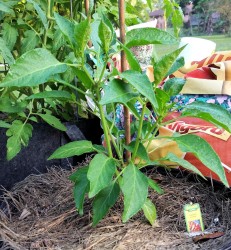
Havsau Pepper 04/01/2016
I took this photo about three weeks later. No more wimpy plant! Instead, it’s growing like no tomorrow.
And although you can’t see it from this angle, the plant is developing all kinds of buds. Within a week, I think it will be flower city on this plant. I’ll be taking more photos over the next few weeks, to keep track of its growth, flowering and fruiting.
Any More Plants Getting Pruned?
You might be wondering if I tried this on any other plants — that maybe this was just a lucky accident?
I had a lot of other plants with flowers and fruits, except for one – Cowhorn. So I snipped it back as well. It’s definitely gotten stockier, but hasn’t had the explosion growth that Havsau experienced. On the other hand, the container or location might have something to do with that — the Big Bertha plant in the container with it (they share a 20-gallon container) is also growing slowly.
About 10 days ago, my Shishito pepper was looking anemic and had stopped flowering. Sooooooo, I picked off all the peppers (there weren’t many) and snipped it back, although not radically. And today I have flowers and lots of little peppers!
Next up is one of my Orange Bell peppers. It has a nice-sized pepper on it, which I will cut off for dinner tonight. And that means tomorrow it’s going to get a trim. The plant is single-stemmed and isn’t flowering, so between taking off the pepper and giving it a snip, I should see some action in the next couple of weeks.
How Long Do Pepper Plants Live – Update
How long do pepper plants live — really? In the years since my original post, I’ve come to think somewhat differently about this interesting plant and its fruit. And while I don’t know that I will be able to speak to bell peppers, I think I will be able to talk about sweet and chile peppers.
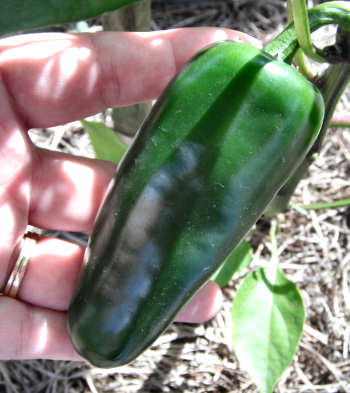 (The reason I can’t speak to bell peppers is that to date, I’ve never had one last very long. I have bad bell karma, I guess.) ;) However, those who have better luck with bells may be able to relate to what I’ve discovered.
(The reason I can’t speak to bell peppers is that to date, I’ve never had one last very long. I have bad bell karma, I guess.) ;) However, those who have better luck with bells may be able to relate to what I’ve discovered.
Getting in the Zone
How long your particular pepper plants live is dependent upon what plant hardiness zone you live in. Peppers are really warm-weather plants, and they can’t handle frost and freezes. If you live in zones, say, 8b to 11, you can probably overwinter your peppers outside. You may need some frost protection from time to time, but if you can do that, it’s a possibility.
North of 8b, you’ll have to overwinter your plants in containers inside. If you have a heated greenhouse, that’s the best option. Otherwise, inside with grow lights is what you’ll need to do.
Why Bother Keeping a Plant Alive?
Good question! Typically, I don’t bother with “everyday” plants — those peppers that I can easily grow from seeds or find at a local big box store. However, a plant that is harder to replace, or one that has produced extraordinarily for you, may be a candidate for keeping alive.
For example, I really enjoy the Fooled You jalapeno pepper that I grew a couple years back. It’s a hybrid, so I can’t really save the seeds. This time, if one of my plants (I have three seedlings) is outstanding, I am going to try to keep it going.
Preparing Your Pepper Plants
How do you prepare your peppers? Be prepared for some “tough love” in order to overwinter.
If you can routinely expect more than two or three freezes in a winter, you’ll need to uproot your pepper and put it in a container you can manage to move around; probably between a 3 to 5 gallon container. If you are already container growing and can move the container inside, you’re a step ahead. If you’re digging the plant up from the ground, you will need a container ready, along with some loose but rich soil ready.
You’ll have to do the uprooting carefully. If your plant is big an unwieldy, you may want to lightly prune – enough so that you can easily handle the plant. Use a shovel to dig in a circle around the plant, starting about a foot away from the stem.
Once your have the plant dug up, gently shake the soil from the roots. Depending on the size of the roots, you may need to lightly trim them back with a sharp pair of scissors. (Or, use a larger container.)
Put some of the prepared soil into the container to about 1/3 the depth. Put the plant into the container and back fill with more soil. Give the plant a light watering, and place it where it can get some morning sun — you don’t want to give it too much sun until it’s settled into the container some.
Clip! Snip!
A few days after your transplanting, or, even if your pepper plant is already in a container, it will need a haircut. Why?
The light available to your plants in Winter is much less than in any other season (in the northern hemisphere, anyway). Inside, your pepper plant will get even less light, unless you have a very bright grow room. Your pepper plant will need fewer leaves to support while it’s in a lower-light and cooler environment.
How far back should you prune? Half its height is a good place to start. I’ll have a post about pruning peppers in the near future; I’ll link to it when I have it ready.
Food and Water
During its overwintering, your pepper will need less water — let the soil dry out between waterings. As far as food goes, you will only need to fertilize rarely, with a low-strength solution. I would say to use fish fertilizer, but only if your are over-wintering outdoors — it would smell a bit much in the house.  😉
Light and Warmth
As you might guess, your pepper plant will need as much light and warmth as you can manage, once it’s acclimated to its re-potting and pruning. Your pepper will appreciate temperatures in the low 70s, and still would like 6 hours of direct sun. Since that may not be possible unless you have a greenhouse, you will probably need to supplement with some plant grow lights.
But Really — How Long Do Pepper Plants Live?
In containers, you may be able to keep a plant going for several years. In-ground (if you are in zone 10 or 11), it could be indefinitely. In any case, you will need to decide how long your want to keep your pepper plant going, and that may depend on how well it keeps producing.
Hope this has helped some!

